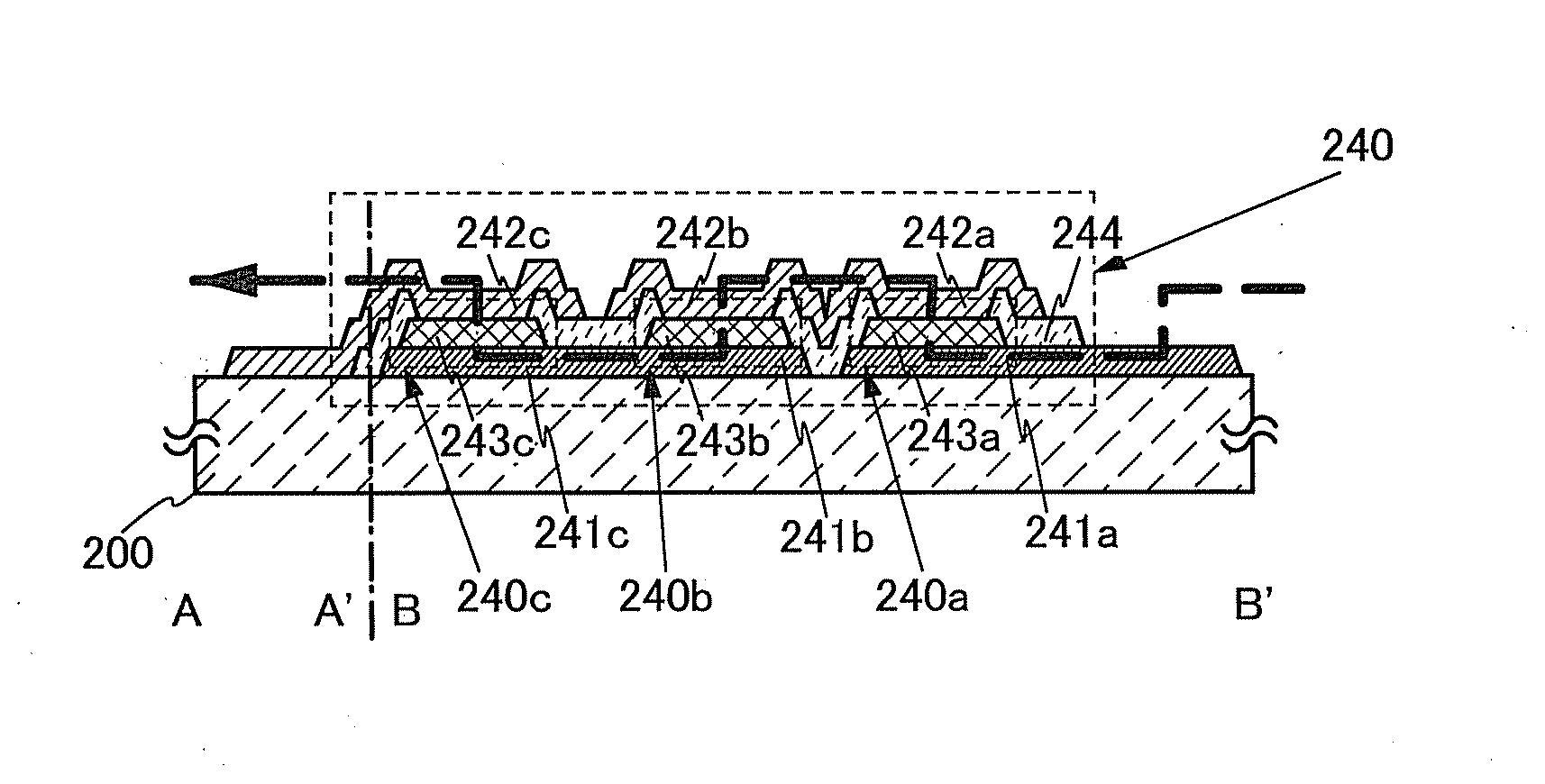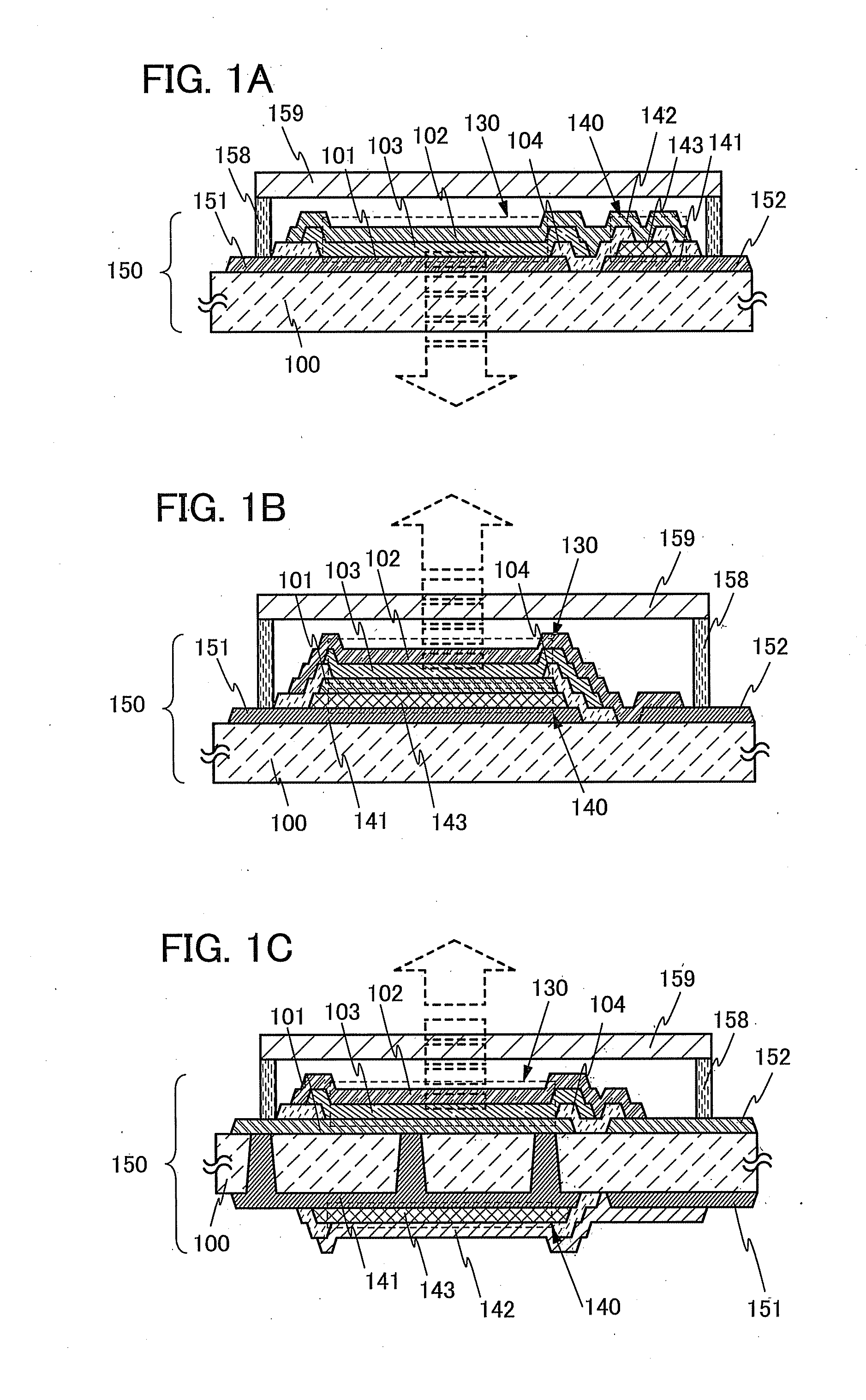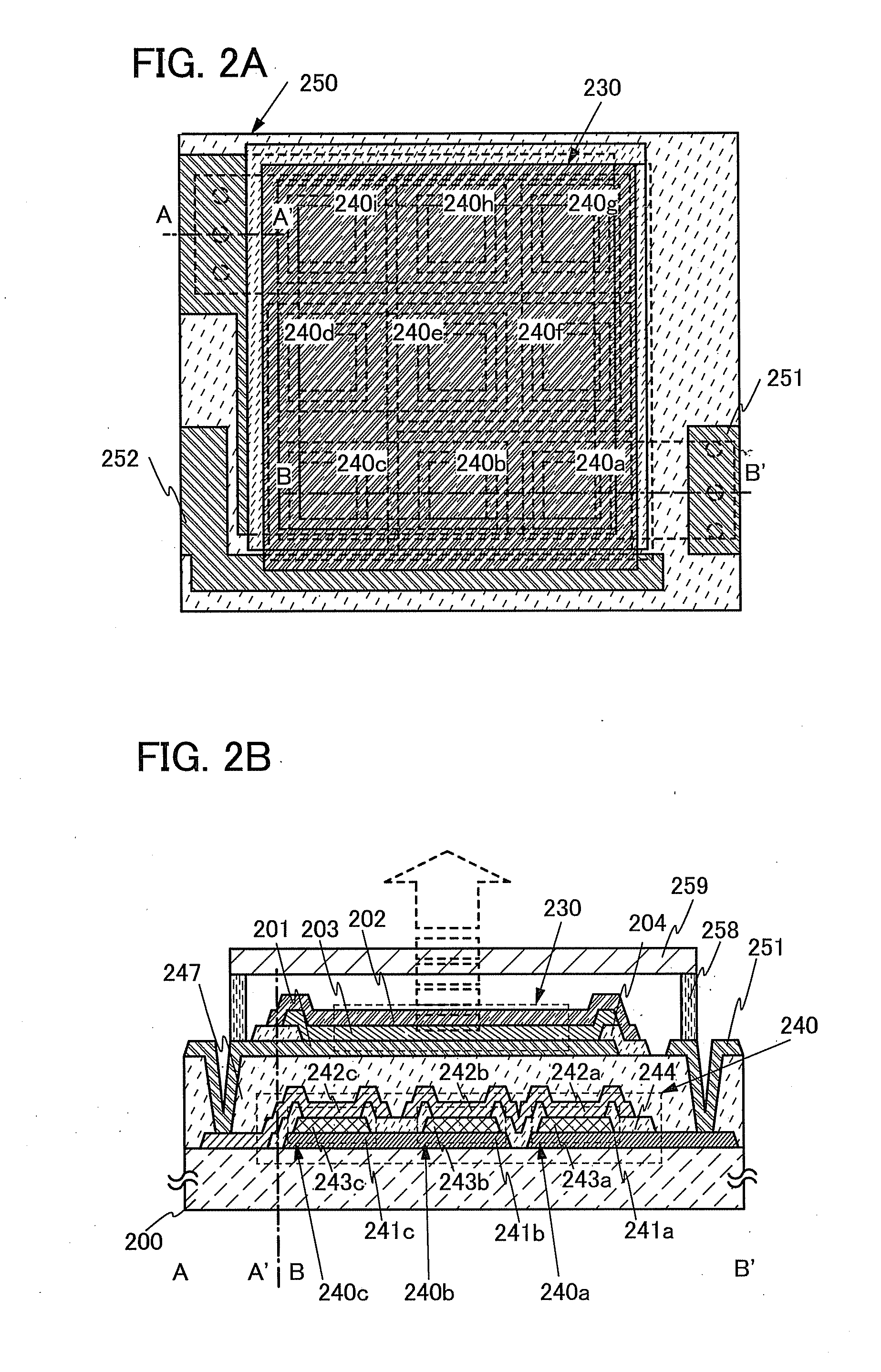Light-Emitting Module, Light-Emitting Panel, and Lighting Device
- Summary
- Abstract
- Description
- Claims
- Application Information
AI Technical Summary
Benefits of technology
Problems solved by technology
Method used
Image
Examples
embodiment 1
[0039]With reference to FIGS. 1A to 1C, this embodiment illustrates a light-emitting module having a structure in which electric power is supplied to a light-emitting element through a positive temperature coefficient thermistor thermally coupled with the light-emitting element, and specifically illustrates a light-emitting module including an organic EL element over a substrate and a positive temperature coefficient thermistor thermally coupled with the organic EL element, in which electric power is supplied to the organic EL element through the positive temperature coefficient thermistor.
[0040]A structure of a light-emitting module 150 in accordance with one embodiment of the present invention is illustrated in FIG. 1A. The light-emitting module 150 exemplified in FIG. 1A includes a light-emitting element 130 and a positive temperature coefficient thermistor 140 over a substrate 100. In addition, the light-emitting element 130 is separated from impurities in the air by a sealant 1...
modification example 1
[0054]Another mode of a light-emitting module in accordance with one embodiment of the present invention is illustrated in FIG. 1B. The light-emitting module 150 exemplified in FIG. 1B includes the positive temperature coefficient thermistor 140 over the substrate 100 and the light-emitting element 130 over the positive temperature coefficient thermistor 140. In addition, the light-emitting element 130 is separated from impurities in the air by the sealant 158 which surrounds the light-emitting element 130 and the sealing material 159 which can transmit light emitted by the light-emitting element 130.
[0055]The positive temperature coefficient thermistor 140 is included between the substrate 100 and the light-emitting element 130. The positive temperature coefficient thermistor 140 includes the PTC layer 143 having a positive temperature coefficient between the lower electrode 141 and the first electrode 101 of the light-emitting element.
[0056]The positive temperature coefficient the...
modification example 2
[0061]Another mode of a light-emitting module in accordance with one embodiment of the present invention is illustrated in FIG. 1C. In the light-emitting module 150 exemplified in FIG. 1C, the light-emitting element 130 on one side of the substrate 100 and the positive temperature coefficient thermistor 140 on the opposite side of the substrate 100 are included so as to overlap with each other. In addition, the light-emitting element 130 is separated from impurities in the air by the sealant 158 which surrounds the light-emitting element 130 and the sealing material 159 which can transmit light emitted by the light-emitting element 130.
[0062]The sides of the substrate 100 each have an insulating surface, one of which is provided with the first electrode 101 of the light-emitting element 130 and the opposite of which is provided with the lower electrode 141 of the positive temperature coefficient thermistor 140. The light-emitting element 130 includes the first electrode 101 in conta...
PUM
 Login to View More
Login to View More Abstract
Description
Claims
Application Information
 Login to View More
Login to View More - R&D
- Intellectual Property
- Life Sciences
- Materials
- Tech Scout
- Unparalleled Data Quality
- Higher Quality Content
- 60% Fewer Hallucinations
Browse by: Latest US Patents, China's latest patents, Technical Efficacy Thesaurus, Application Domain, Technology Topic, Popular Technical Reports.
© 2025 PatSnap. All rights reserved.Legal|Privacy policy|Modern Slavery Act Transparency Statement|Sitemap|About US| Contact US: help@patsnap.com



